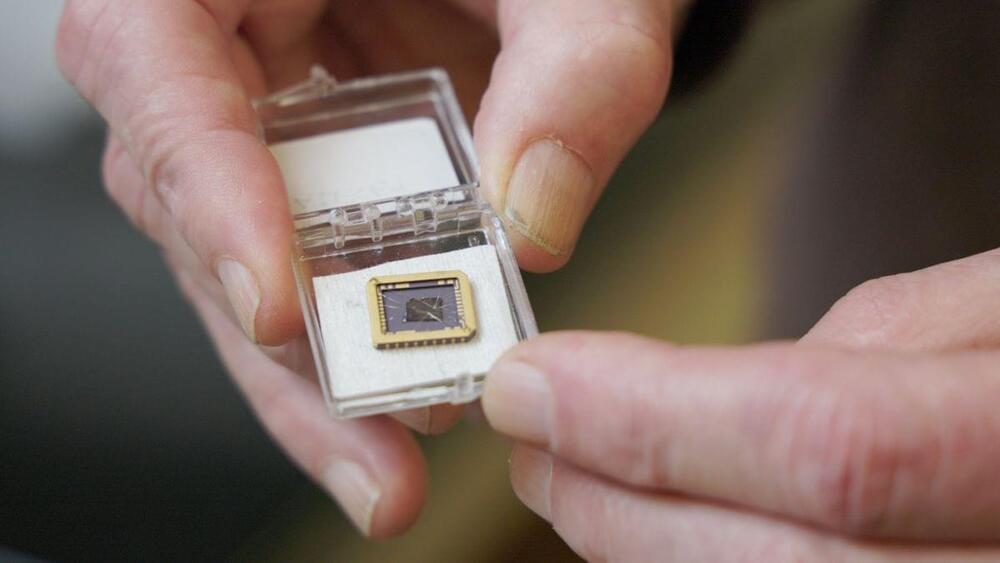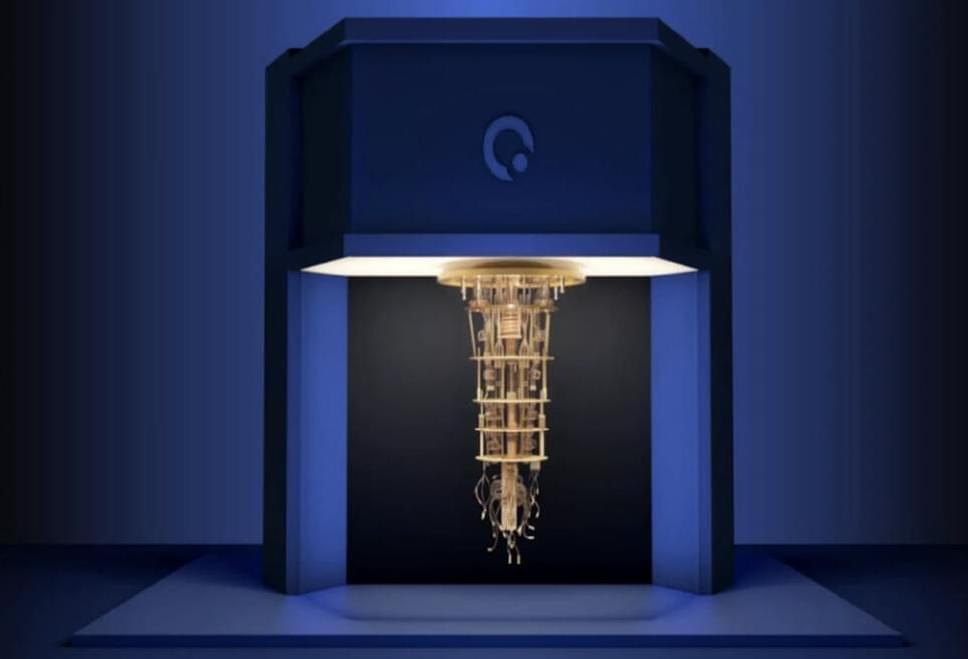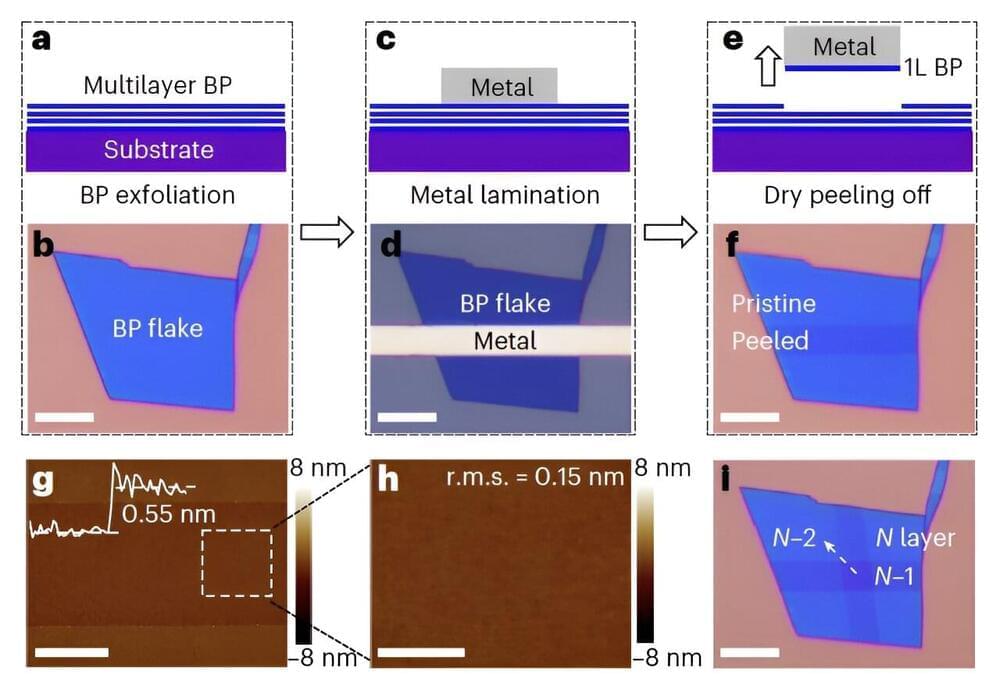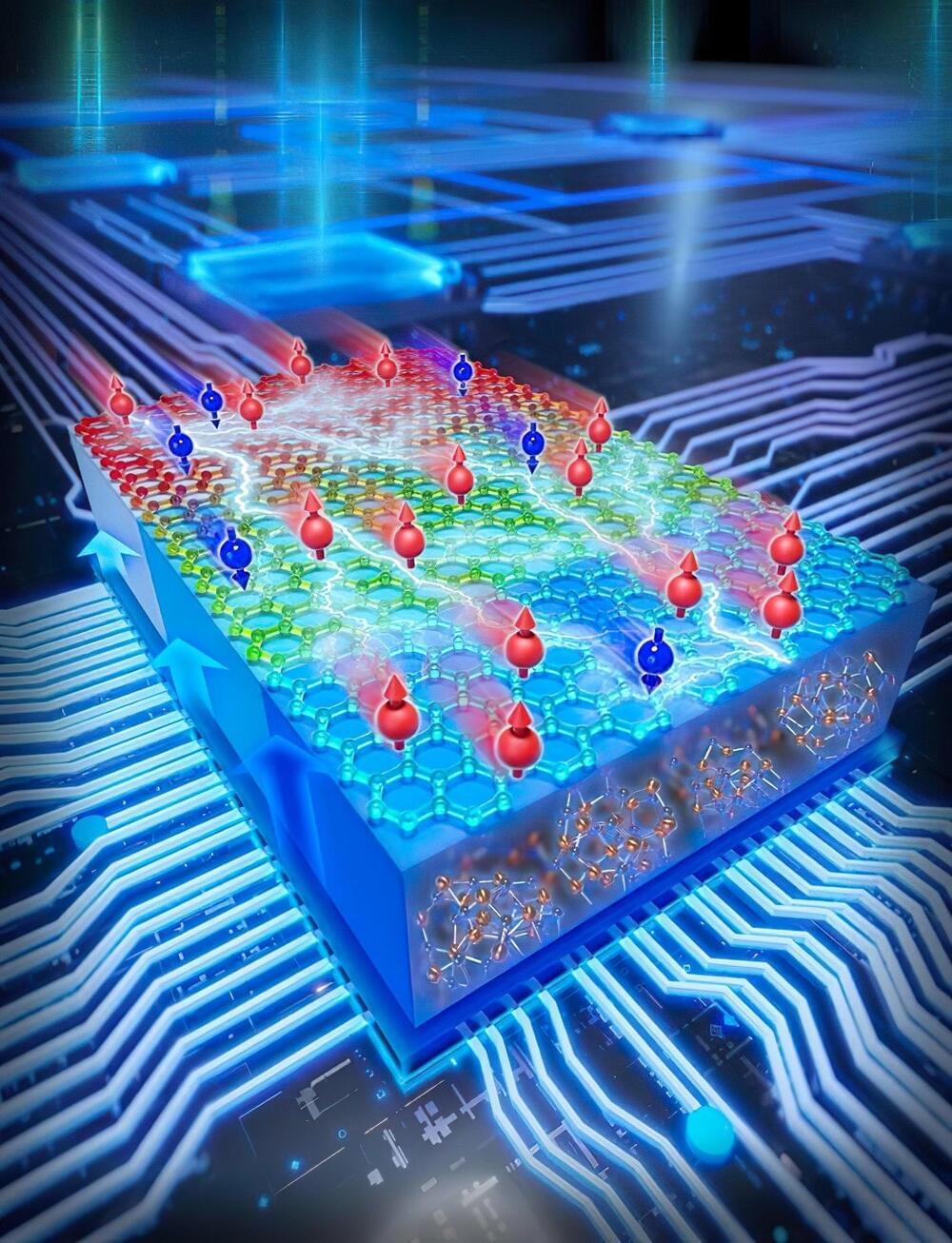Scientists overcame a limitation in graphene to harness the material as a working semiconductor at terahertz frequencies with 10 times the mobility of silicon.


Although chaos theory can solve nearly anything that is unknown I basically think that in an infinite universe as made real from the infinite microchip that uses superfluid processing power is the real answer and we are off by factor of infinite parameters still.
When we look at scientific progress, especially in physics, it can seem like all the great discoveries lie behind us. Since the revolutions of Einstein’s theory of relativity and quantum mechanics, physicists have been struggling to find a way to make them fit together with little to no success. Tim Palmer argues that the answer to this stalemate lies in chaos theory.
Revisiting a book by John Horgan, science communicator and theoretical physicist Sabine Hossenfelder recently asked on her YouTube channel whether we are facing the end of science. It might seem like a rhetorical question — it’s not possible for science to really end — but she concludes that we are in dire need of some new paradigms in physics, and seemingly unable to arrive at them. We are yet to solve the deep ongoing mysteries of the dark universe and still haven’t convincingly synthesised quantum and gravitational physics. She suggests that ideas from chaos theory might hold some of the answers, and therefore the ability to rejuvenate science. I think she’s right.
Many physicists – perhaps most — might think this is surely a silly idea. After all, chaotic systems are describable by elementary classical Newtonian dynamics. The phenomenon of chaos can be illustrated by taking the simplest of dynamical systems, the pendulum, and simply adding a second pivot into its swinging arm. The motion of the tip of the pendulum arm is hard to predict, being sensitive to its exact starting conditions – the hallmark of chaos. Fascinating yes, but surely, if we have learned anything over the last 100 years it is this: we are not going to make progress in fundamental physics by going back to elementary classical dynamics.
The first functional semiconductor made from graphene has been created at the Georgia Institute of Technology. This could enable smaller and faster electronic devices and may have applications for quantum computing.
Credit: Georgia Institute of Technology.
Semiconductors, which are materials that conduct electricity under specific conditions, are foundational components of electronic devices like the chips in your computer, laptop, and smartphone. For many decades, their architecture has been getting smaller and more compact – a trend known as Moore’s Law. This has enabled gigantic leaps in a vast range of technologies, from general computing speeds and video game graphics, to the resolution of medical scans and the sensitivity of astronomical observatories.


Quantum computing is becoming more accessible for performing calculations. However, research indicates that there are inherent limitations, particularly related to the quality of the clock utilized.
There are different ideas about how quantum computers could be built. But they all have one thing in common: you use a quantum physical system – for example, individual atoms – and change their state by exposing them to very specific forces for a specific time. However, this means that in order to be able to rely on the quantum computing operation delivering the correct result, you need a clock that is as precise as possible.
But here you run into problems: perfect time measurement is impossible. Every clock has two fundamental properties: a certain precision and a certain time resolution. The time resolution indicates how small the time intervals are that can be measured – i.e. how quickly the clock ticks. Precision tells you how much inaccuracy you have to expect with every single tick.

Over the past twenty years, many companies, including Google, Microsoft, and IBM, have invested in quantum computing development. Investors have contributed over $5 billion to this cause. The aim is to use quantum physics properties to process information in ways that traditional computers cannot. Quantum computing could impact various fields, including drug discovery, cryptography, finance, and supply-chain logistics. However, the excitement around this technology has led to a mix of claims, making it hard to gauge the actual progress.
The main challenge in developing quantum computers is managing the ‘noise’ that can interfere with these sensitive systems. Quantum systems can be disrupted by disturbances like stray photons from heat, random signals from nearby electronics, or physical vibrations. This noise can cause errors or stop a quantum computation. Regardless of the processor size or the technology’s potential uses, a quantum computer will not surpass a classical computer unless the noise is controlled.
For a while, researchers thought they might have to tolerate some noise in their quantum systems, at least temporarily. They looked for applications that could still work effectively with this constraint. However, recent theoretical and experimental advances suggest that the noise issue might soon be resolved. A mix of hardware and software strategies is showing potential for reducing and correcting quantum errors. Earl Campbell, vice president of quantum science at Riverlane, a UK-based quantum computing company, believes there is growing evidence to be hopeful about quantum computing’s future.

Almost exactly one year ago at CES 2023, Qualcomm announced its Snapdragon Ride Flex system-on-chip (SoC) product family. As an expansion of the company’s Snapdragon Digital Chassis product portfolio, the new SoC family is meant to support advanced driver assistance systems (ADAS) as well as digital cockpit and infotainment applications spanning from entry level to premium vehicles. At the time, Qualcomm announced that the Ride Flex SoC was sampling with an expected start of production in early 2024. It’s now early 2024 and CES is about to kick off again. Tirias Research is expecting to hear an update on the product family next week. We anticipate the update will include, at the very least, some of the partners who will be bringing the Ride Flex SoCs to market in production volumes this year and into 2025. Given Qualcomm’s track record for hitting their estimated timelines, we felt that a re-cap of the product family is warranted leading up to next week’s anticipated update.
“Flex-ing” Resources to Support Mixed Criticality and Multiple Tiers
The Snapdragon Ride Flex is actually two monolithically integrated 4nm SoCs – a primary SoC and what Qualcomm are calling a Safety Island SoC. The primary SoC consists of a Kryo Gen 6 Arm v8.2 central processing unit (CPU) with integrated L3 cache, an Adreno 663 graphics processing unit (GPU), a Hexagon neural processing unit (NPU), a Spectra 690 image signal processing (ISP), two Adreno display processing units (DPUs) for multiple high-resolution display support and associated memory and I/O interconnects. This part of the SoC is Automotive Safety Integrity Level (ASIL) B certified. The Safety Island SoC, which is ASIL-D certified, consists of a multi-core real-time CPU with enhanced error managements support and isolated memory and peripherals. ASIL is a risk classification methodology established under ISO 26,262 from the International Organization for Standardization which defines functional safety for road vehicles.

The third-generation superconducting quantum computer, “Origin Wukong,” was launched on January 6 at Origin Quantum Computing Technology in Hefei, according to Chinese-based media outlet, The Global Times, as reported by the Pakistan Today.
According to the news outlets, the “Origin Wukong” is powered by a 72-qubit superconducting quantum chip, known as the “Wukong chip.” This development marks a new milestone in China’s quantum computing journey as it’s the most advanced programmable and deliverable superconducting quantum computer in China, as per a joint statement from the Anhui Quantum Computing Engineering Research Center and the Anhui Provincial Key Laboratory of Quantum Computing Chips, shared with the Global Times.
Superconducting quantum computers, such as the “Origin Wukong,” rely on a approach being investigated by several other quantum computer makers, including IBM and Google quantum devices.

Two-dimensional (2D) semiconducting materials have proved to be very promising for the development of various electronic devices, including wearables and smaller electronics. These materials can have significant advantages over their bulky counterparts, for instance retaining their carrier mobility irrespective of their reduced thickness.
Despite their promise for creating thin electronics, 2D semiconductors have so far only rarely been used to create monolayer transistors, thinner versions of the crucial electronic components used to modulate and amplify electrical current inside most existing devices. Most proposed monolayer transistors based on 2D semiconductors were created using a few carefully selected materials known to have relatively stable lattice structures, such as graphene, tungsten diselenide or molybdenum disulfide (MoS2).
Researchers at Hunan University, the Chinese Academy of Sciences and Wuhan University recently set out to develop new monolayer transistors using alternative 2D semiconducting materials that have so far been primarily used to create multi-layer transistors, including black phosphorus (BP) and germanium arsenide (GeAs). Their work is published in the journal Nature Electronics.

Physicists at the National University of Singapore have innovated a concept to induce and directly quantify spin splitting in two-dimensional materials. By using this concept, they have experimentally achieved large tunability and a high degree of spin-polarisation in graphene. This research achievement can potentially advance the field of two-dimensional (2D) spintronics, with applications for low-power electronics.
Joule heating poses a significant challenge in modern electronics, especially in devices such as personal computers and smartphones. This is an effect that occurs when the flow of electrical current passing through a material produces thermal energy, subsequently raising the material’s temperature.
One potential solution involves the use of spin, instead of charge, in logic circuits. These circuits can, in principle, offer low-power consumption and ultrafast speed, owing to the reduction or elimination of Joule heating. This has given rise to the emerging field of spintronics.